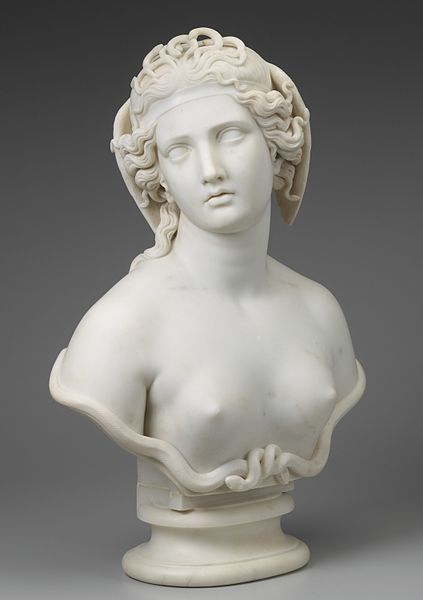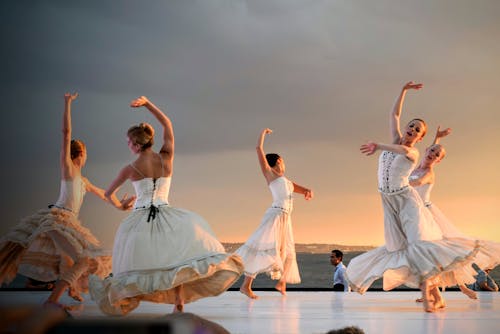
There is an unusual rock formation in the Blue Mountains, New South Wales, Australia, on the north escarpment of the Jamison Valley. The three rocks stand close to the town of Katoomba and are one of the Blue Mountains’ best known sites, each towering above 900 meter (nearly 3000 foot) -heights. These three rocks, known as “the Three Sisters” seem to capture the sunlight and remain full of colors throughout the day. Even at night time, they look golden against the backdrop of the dark sky.

A Dreamtime aboriginal legend tells us the story of three beautiful sisters named Meehni, Wimlah and Gunnedoo who lived in the heart of the Jamison Valley as part of the Katoomba tribe. Unfortunately, although the law of the land forbade the girls from marrying outside their own people, they were in love with three brothers from a neighboring tribe.
The brothers decided to abduct the girls and carry them away to be wed, forcefully taking them away from their family. They formed an army and a major battle ensued as the two tribes clashed. Many people were killed because of their forbidden loves.
A kind elderly witchdoctor from the Katoomba tribe feared for the safety of the beautiful sisters, so he casted a spell to turn them into stones and keep them safe from harm. However, the witchdoctor was killed in battle and none of the survivors were able to reverse the spell. Therefore, the sisters forever remain as rocks, beautiful yet condemned to stand mournfully, high above the Jamison Valley, never able to return to the human form—a reminder of this battle for generations to come, and for the Aboriginal youths to be careful in love and marriages, as they would not only affect the two lovers, but their families and tribes as well.

Another version of the legend tells of the three sisters and Tyawan, their father who was a witch doctor. Leaving near them was a bunyip (a large mythical creature from Australian Aboriginal mythology) that lived in a deep hole, feared by all. Therefore, whenever Tyawan had to pass the hole in search for food, he would leave his daughters safely on the cliff behind a rocky wall.
One day, Tyawan waved goodbye to his daughters and went down the cliff steps into the valley. Suddenly, at the top of the cliff, Meenhi, one of the sisters, was frightened by a large centipede which suddenly appeared before her. She took a stone and threw it at the centipede. The stone rolled over the cliff, crashing into the valley below attracted the attention of the bunyip. The rocky wall behind the three sisters then began to split open, leaving them stranded on a ledge at the top of the cliff as the Bunyip emerged to see the terrified sisters. As the bunyip began to approach the girls, their father Tyawan used his magic bone to turn them into stone and protect them from harm.

The bunyip then began to chase Tyawan, gradually trapping him. To gain advantage and flee from the bunyip, Tyawan used his magic bone again and changed into a magnificent lyre bird. However, he dropped his magic bone in the process. Once he had escaped the bunyip, Tyawan returned in search of his magic bone, yet this was never to be found.
The lyre bird has been searching for this magic bone ever since as his daughters, trapped in their rock forms, stand silently overlooking the valley hoping that one day he’ll find the bone and turn them all back to their former selves. To this day, visitors of the Three Sisters can still hear the sound of the lyre bird as he continues his quest for his lost magic bone.

Another Three Sisters can also be found in Alberta, Canada. Known individually as the Big Sister, Middle Sister and Little Sister, or Faith, Charity and Hope. The legend associated with them is of three nuns who went for a walk one day and never returned, also a reason the peaks are called the Three Sisters.
Mythology is full of legends of petrification, or of men and women being turned into stone. Among the many other famous legends are Greek mythology’s Anaxarete who was turned into stone by Aphrodite after Iphis, the man she scorned, hanged himself, as well as Lot’s wife in The Book of Genesis, who was changed into a pillar of salt when she gazed back at the burning Sodom.
In Norse mythology, a dwarf named Alvíss appeared at Bilskirnir, Thor’s hall, to collect his bride, Thrud, one of Thor’s daughters. As Thor was away at the time of the betrothal, he was not happy with this and said that he would only allow Alvíss to leave with Thrud if the dwarf could answer all his questions. He then proceeded to ask Alvíss a series of questions, from the cosmic to the mundane. After distracting Alviss through the night, Thor’s trap was sprung as daylight shone through the hall. Knowing Alviss’ weakness of the sunlight, Thor watched as, before Alviss was able to run away, the sunlight petrified the poor dwarf whose only mistake was trying to woo one of Thor’s daughters.

The best-known tale of such metamorphoses is the petrifying power of Medusa. Medusa was one of the three Gorgon sisters, daughters of Phorcys and Ceto, celebrated for her charms and beauty. Poseidon became enamored by her, and raped her in the temple of Athena. This violation of the sanctity of her temple angered Athena, who then turned Medusa’s hair into snakes and cursed her face to always turn men into stone by sight. Later, Perseus rendered his name immortal by his conquest of Medusa.
Mythologist Robert Graves believes that the myth of Perseus preserves the memory of the conflicts which occurred between men and women in the transition from a matriarchal to a patriarchal society. In this case, the symbolic function of Medusa’s face, and later the Gorgon’s mask, was possibly to keep men at a safe distance from the sacred spaces and ceremonies reserved for women, such as those which celebrated the Triple Goddess. The mask was also worn by young maidens to ward off male lust, much like Thor’s reason for tricking Alviss to keep him away from his daughter and the Aboriginal witchdoctor’s reason for turning the three sisters into stones.
However, there are other more sinister purposes of petrification in ancient mythology than protecting maidens from undesirable suitors. To be petrified means that one loses one’s will and ability to act. Although the petrified person is not dead, they can no longer affect or feel any sensation from the world around them. Although sometimes petrification can be reversed, in most legends it is presented as a point of no return – a living death from which there is no recovery.

Medusa’s power gives her victim a punishment that is worse than death itself, condemning them to live between the realms of the dead and the living without being able to be a part of either of them. Apart from being the very symbol of ambiguity, Medusa is also one of the oldest mythical figures, perhaps an echo of the demon of ancient Mesopotamian religion, Humbaba, the guardian of the Cedar Forest where the gods lived, who was decapitated by Gilgamesh. Medusa’s role is also highly symbolic, and sets the tone of the stories of petrification that come after her.
She was the guardian of terrifying places or the Underworld. She reappears in this role in Dante’s Divine Comedy (Inferno) and Milton’s Paradise Lost. Medusa, and her power of petrification, guards the doorway between the realm of the living and the dead, stopping the living from entering the world of the dead and preventing the dead from coming back to the world of the living.

Bearing that symbolism in mind, in Cornish folklore, petrifaction stories are used to explain the origin of prehistoric megalithic monuments such as stone circles and monoliths. An example of this is the Merry Maidens. The Merry Maidens are a late Neolithic stone circle located at the south of the village of St Buryan in Cornwall, United Kingdom. A pair of standing stones called “The Pipers”, placed some distance from the Merry Maidens, is legendarily associated to this group.
The local myth about the creation of the stones says that nineteen maidens were turned into stone as punishment for dancing on a Sunday. The Pipers are said to be the petrified remains of the musicians who played for the dancers. According to the legend, the two pipers heard the church clock in St Buryan strike midnight, realized they were breaking the Sabbath, and started to run up the hill away from the maidens who blissfully continued dancing unaccompanied.

Mythology, and the past, is often anchored to recognized forms in the landscape, something that is also done to a degree in the west with the use of memorials, statues, or plaques. In rendering geography sacred, people are able to feel the benefit of myths and history in their contemporary lives through the landscape as a connection between their present lives to that in the past. Such physical markers of the past may also serve as mnemonic devices for the groups or societies, helping to establish their identity. The Three Sisters, then, would have at least two other functions apart from their use as marks for ancient Aboriginal ceremonies. They mark the ancestral movements and events, as well as serving as a memorial object.
A physically represented past, in the eyes of the inhabitants of the landscape, also bears testimony to truth. Possessing knowledge of physical forms becomes almost equally as important as possessing knowledge of the events those forms symbolize. While the people in the west look at past events in terms of time, the Aborigines look at their events in terms of space and physical places. It is the physical place that which joins the past to the present and provides a sense of history, continuity, and identity.

Some stones and rock formations serve the additional purpose of being reminders for proper social behavior. For example, in one myth from Wamira, Papua New Guinea, two women, named Maradiudiva and Marakwadiveta, turned to stones. The myth relates that each time Maradiudiva went down to the sea to fetch salt water, her sister, Marakwadiveta, ate all the food and later told lies about relatives who had come and eaten them. Hungry and hurt, as she was being lied to by her own sister, Maradiudiva walked into the sea and turned into stone. Now, as a stone, she stands all alone in the bay. Her sister, Marakwadiveta, also turned to stone and today is perched on the hillside overlooking the sea from where her sister stands, forever tortured by the sight of her sister’s spirit trapped in a stone because of her wrongdoings.
The stones’ presence today reminds the people of Wamira about the proper etiquette for sharing food. The motive is known as far as Fiji, where there is a story of a man and woman taken in guilty intercourse were turned into stone, and South East Asia, where there is a story of a daughter who turned into a weeping stone for being disrespectful to her mother.

